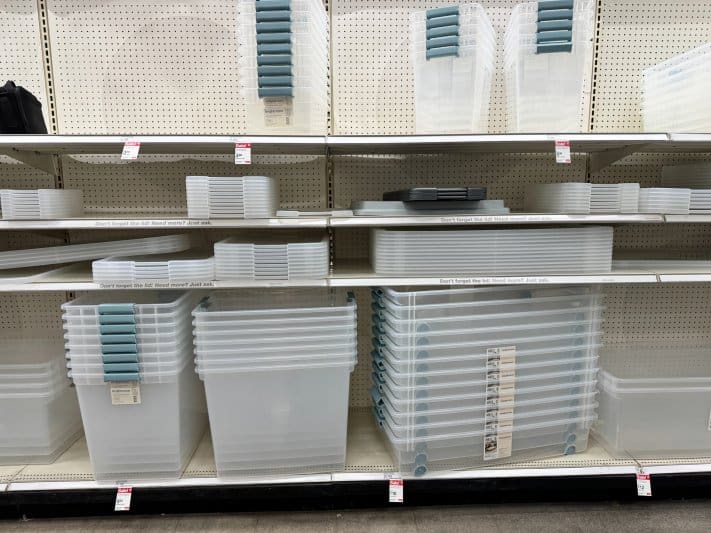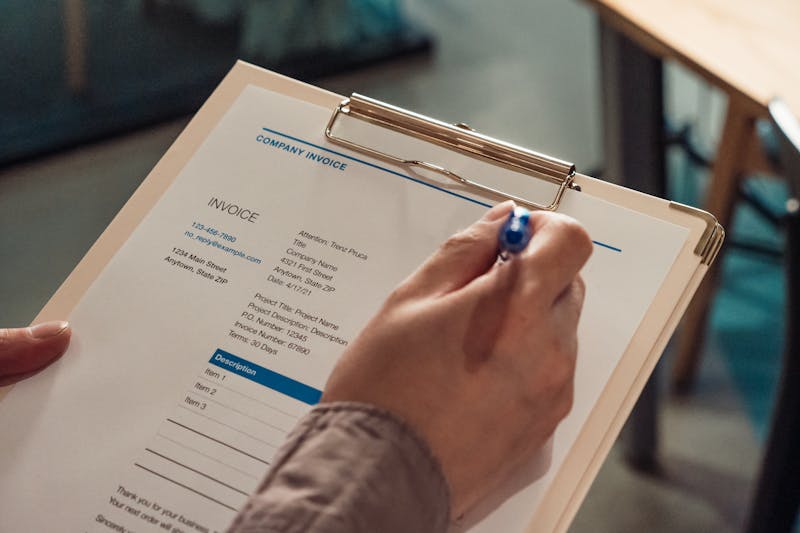9 Ways Professional Organizers Charge Clients for Shopping and Research
This page may contain links to Amazon.com or other sites from which I may receive commission on purchases you make after clicking on such links. Read my full Disclosure Policy

Recently, I was asked by a student,
“I just spent hours preparing an organizing plan of action, researching products, and shopping for a client. Should I charge her for this?”
My Reply
Great question! I think you said you were creating an excel spreadsheet with products. That is an excellent option. Research can be time-consuming, especially until you have built your resources toolkit that you can pull from for future projects. Other ideas:
- Building “wish lists” or “favorites” on Amazon, The Container Store, Bed Bath Beyond, Target, etc.
- Pinterest boards
- Evernote
I am happy to hear the Organizing Plan of Action (OPA – included in Mastering the Business of Organizing) helped you plan the project. It gives me a clear direction on what the client wants to accomplish. As far as time spent researching, shopping, and preparing an OPA, here are a few ideas:
- Set a time limit of how much time you will spend at no cost, i.e., 15 minutes and anything over that you will bill at your hourly rate
- Charge your hourly rate
- Include it in a package, such as 6 hours of organizing + 1-hour research + 1-hour shopping
- Do the shopping online at your client session as part of the session time. I prefer this over other options because I can get accurate measurements. The client can pay instead of me and get reimbursed, and the materials can be delivered directly to the client’s location.
- Do a Zoom session with your client and you can go shopping together virtually at your hourly rate.
- Meet your client at a store and shop with her at your hourly rate or come up with a “shopping” rate
- Some stores, such as The Container Store, Williams Sonoma, Pottery Barn, and West Elm have trade programs that give you, a professional organizer, a discount that you can pass on to your client because you charge for shopping.
- Charge for the OPA as a package offering. For example, the initial consultation + OPA for $250. A DIY option for your client.
- Not charge, thereby making yourself more valuable to your client than other professional organizers.
Want to talk to colleagues about shopping for clients – or anything else?
Join the POPS Circle, where organizing and productivity professionals share ideas, experiences, and encouragement.
Readers
Do you charge your clients for research, shopping, or preparing an organizing plan of action? Tell us why you do or do not.
Photo by mkopka / depositphotos




The package deal & sitting down with them at the consultation make the most sense to me. I noticed some clients don’t have the time, so I would do the research & charge them. Others that are more engaged and have the time, we could sit & order together.
Although, right now as I am just starting out, I like to not charge! I am starting to build favorite lists at Amazon & Ikea, and also buying go-to items at TJ Maxx & Marshall’s to have on hand.
Thank you Anne for thinking of all the ways to save time & be more efficient with your time & clients!
Hi Elizabeth,
Thank you for sharing your comment and thoughts. I find it really is a case-by-case basis depending on what the client needs and wants. So, I try to have options for them because that is what they want to hear.
For me, this is a question of scale and context. I am willing to offer a bit of support at no charge in context of a larger project. That said, no one should expect a professional to work for free.
In terms of products, I typically assemble an Amazon wishlist and have the clients order directly. Research is something that benefits multiple clients, so I feel that is on me.
It makes sense to me that if you have certain go-to products that you recommend to many clients, there’s no harm in sharing that information freely. On the other hand, if someone wants something truly unique that’s never come up before and probably won’t come up again, I think it’s justified to charge for the research. (That’s how I handle it when clients need a plugin for a specific purpose.)
I would always charge time and then get reimbursed for the products I purchased at the rate I bought them. This way, the math was transparent, and my bookkeeping was not confusing.
That makes a lot of sense. I can imagine that marking up products would create a bookkeeping nightmare!
Anne shared so many creative options for charging (or not charging) for your shopping and research time. In general, I don’t charge if it’s a quick thing or if it’s a resource I already have and can easily share.
However, if it’s something above and beyond, I charge the client. As far as doing the purchasing for them or just sending product links or lists, that depends on the client’s needs. Some want a full service experience, while others are happy to DIY part of the process. I’m flexible with that, and defer to what the client wants.
That sounds like a very good approach, Linda!
What a robust list of ideas. Generally, I am willing to do a small amount of research for free, especially if it’s useful to me for a future client or blog post. Anything less than half an hour is “play” time for me, and no more onerous than goofing around on the web. However, that’s purely in support of shopping, as I don’t do a written organizing plan.
While I have certain clients (particularly senior citizens who don’t drive) for whom I’ll help with online orders (through their own accounts) or brick & mortar purchases at stores during our regularly-scheduled sessions, I generally encourage clients to take responsibility for this kind of “acquisition” work as part of their homework. On the rare occasion when I do the shopping on their behalf (such as I did researching and purchasing digital picture frames, setting them up, and even creating a slide show for a client’s 50th wedding anniversary), I charge my full rate for my time.
I will admit, though, that although I’m a member of some trade programs, I’ve yet to use them. However, whenever I have a discount for something, I’m eager to give my clients the opportunity to use it, as it provides a nice “value added” situation.
I’ll have to consider virtual Zoom shopping; that sounds like a great idea!
It’s so interesting to see the many ways different organizers handle shopping for clients! It makes me think it might be a good question for potential clients to ask, so they’ll know if they need to factor the cost into their budget.